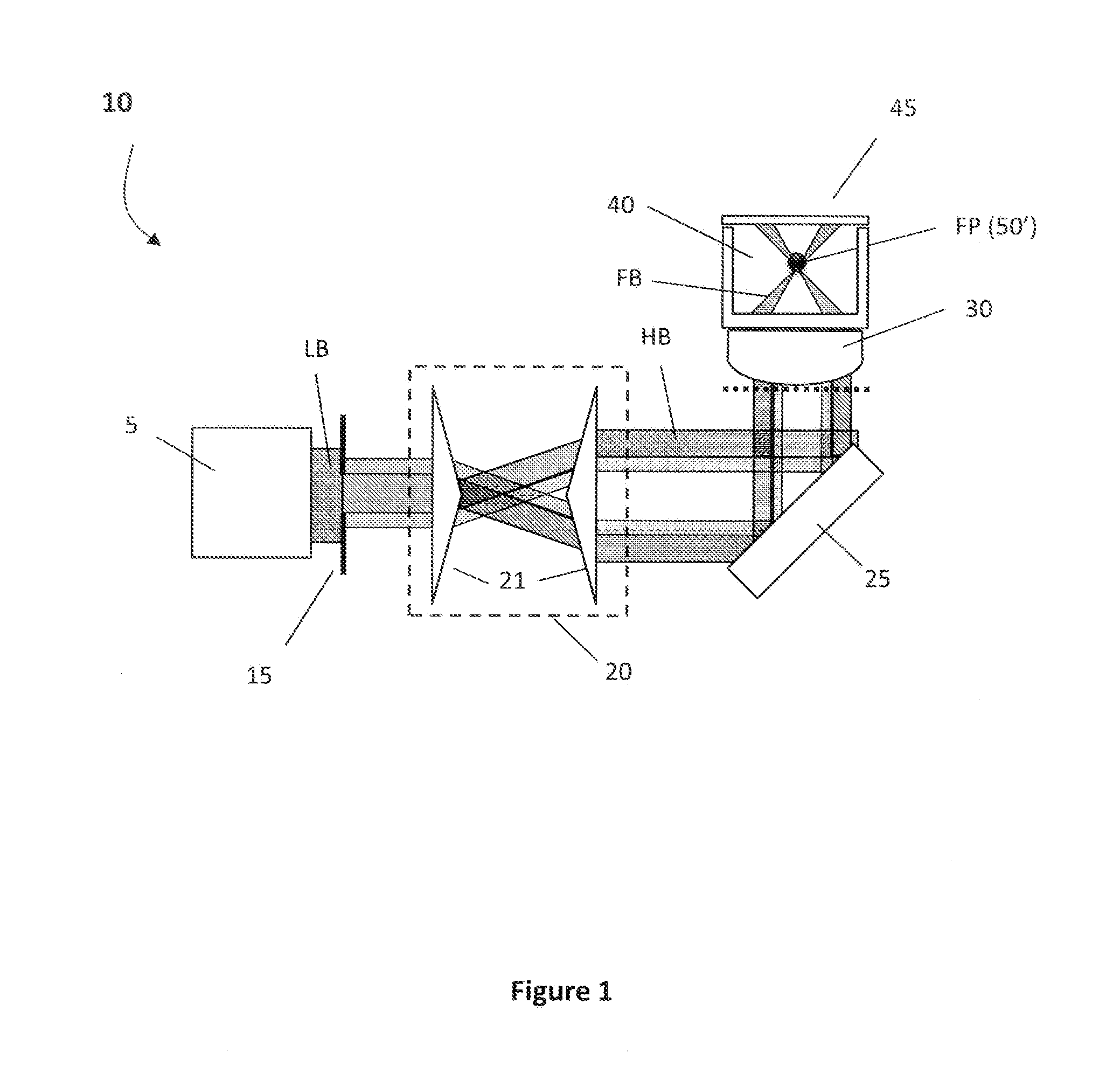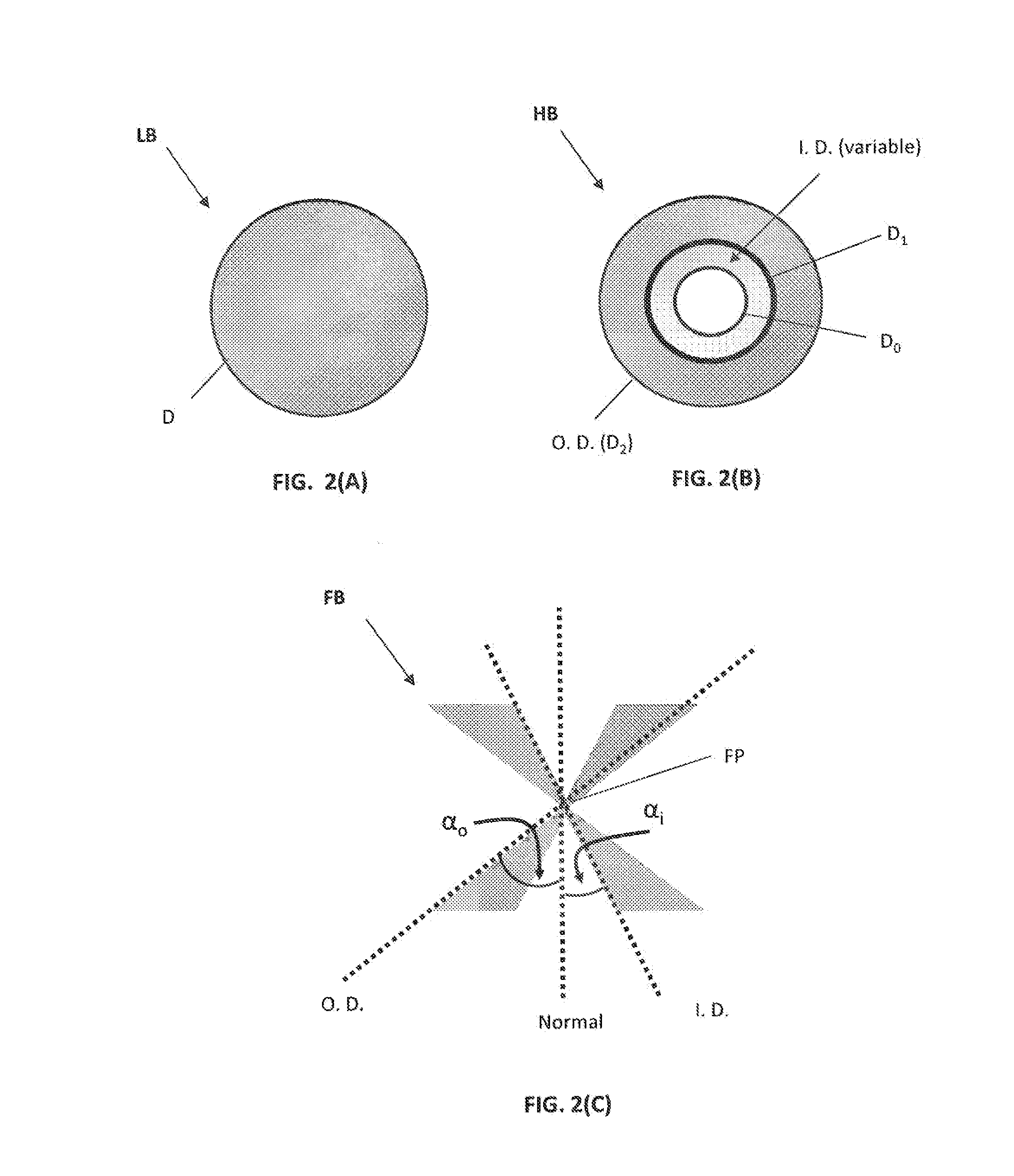Optical trap using a focused hollow-beam for trapping and holding both absorbing and non-absorbing airborne particles
a hollow-beam and optical trap technology, applied in the field of optical traps, can solve the problems of difficult air trapping of airborne particles, airborne particles posing many problems,
- Summary
- Abstract
- Description
- Claims
- Application Information
AI Technical Summary
Benefits of technology
Problems solved by technology
Method used
Image
Examples
Embodiment Construction
[0026]A novel optical trapping apparatus and methods for using the same are disclosed. This innovative optical trapping technique utilizes the radiative pressure of light to trap and hold transparent (non-absorbing) airborne particles while the photophoretic force is able to trap absorbing particles in the same optical geometry formed of a single shaped laser beam. The radiative pressure force results from the transport of momentum from photons to a particle. More particularly, radiative pressure forces are a combination of a gradient force and a scattering force. If a particle is near the focus of a laser beam, the gradient force will pull the particle back toward the high intensity region at the focus, providing the restoring force required to trap a particle. On the other hand, the scattering force, which results from the transfer of momentum from photons scattered off a particle, pushes the particle in the direction of light propagation and does not provide the required restorin...
PUM
 Login to View More
Login to View More Abstract
Description
Claims
Application Information
 Login to View More
Login to View More - R&D
- Intellectual Property
- Life Sciences
- Materials
- Tech Scout
- Unparalleled Data Quality
- Higher Quality Content
- 60% Fewer Hallucinations
Browse by: Latest US Patents, China's latest patents, Technical Efficacy Thesaurus, Application Domain, Technology Topic, Popular Technical Reports.
© 2025 PatSnap. All rights reserved.Legal|Privacy policy|Modern Slavery Act Transparency Statement|Sitemap|About US| Contact US: help@patsnap.com



